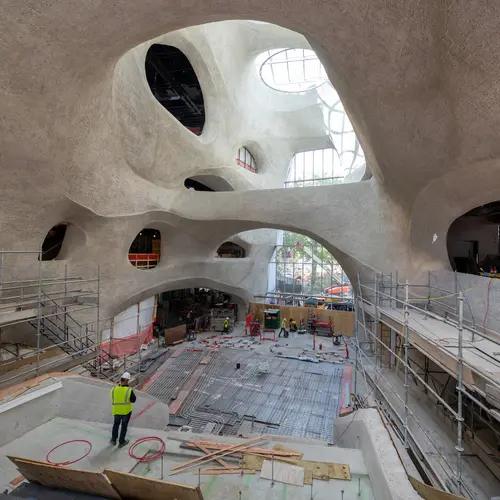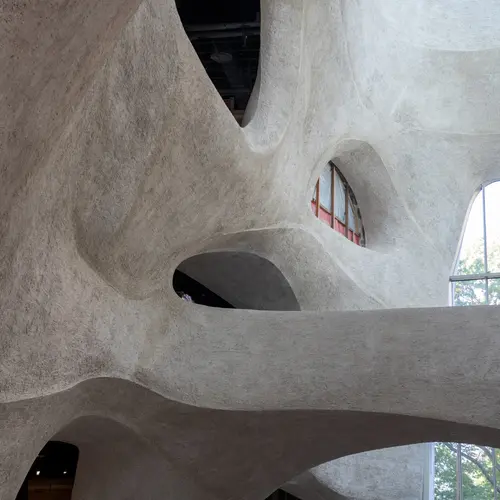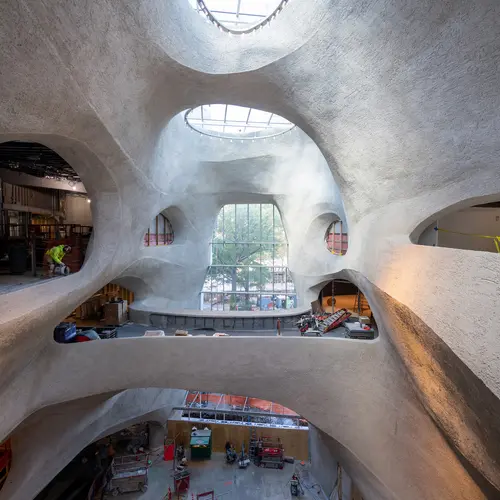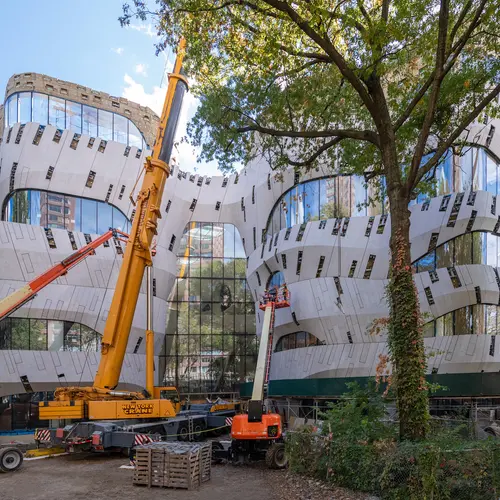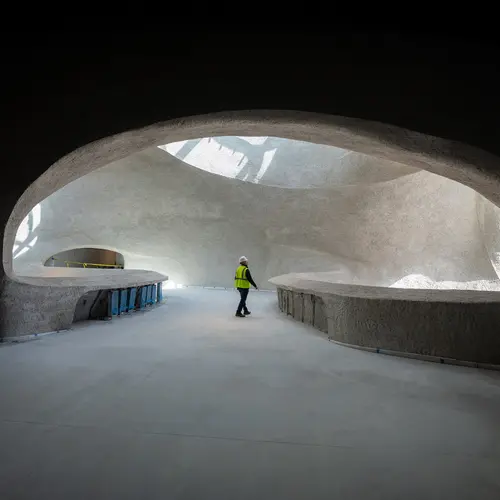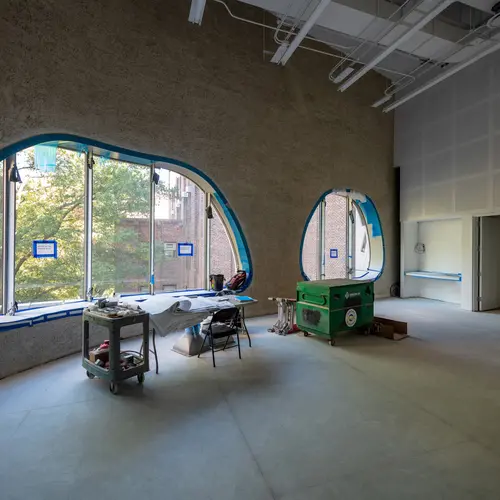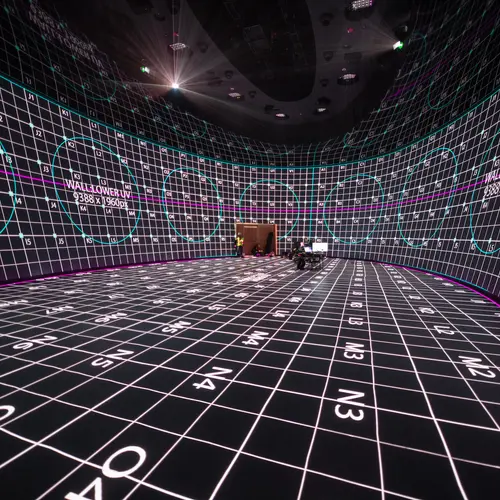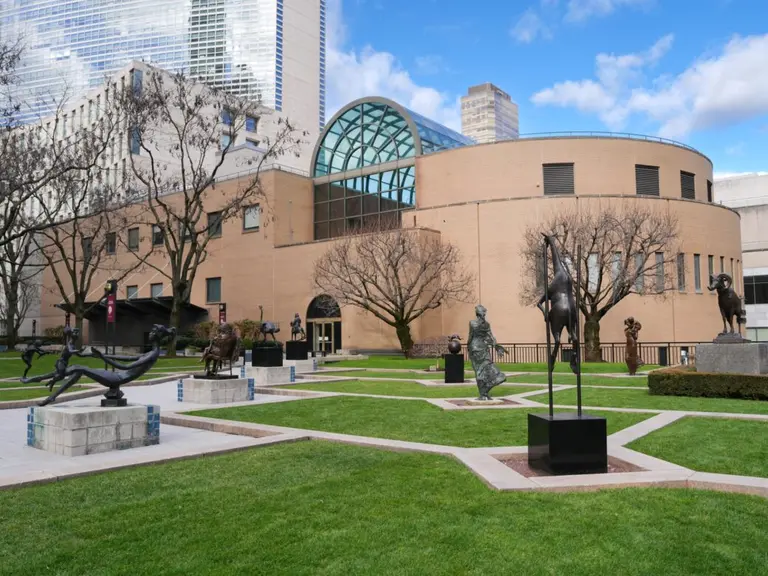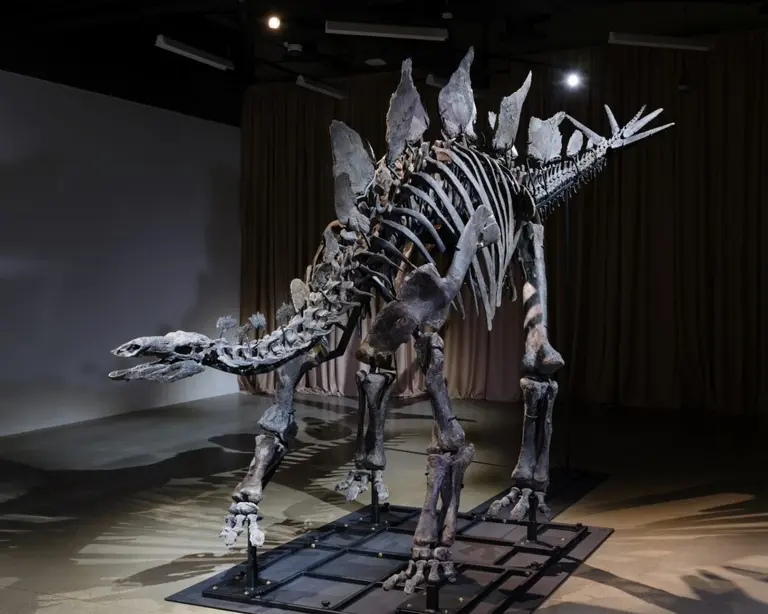See how Studio Gang’s canyon-inspired science center is taking shape at AMNH
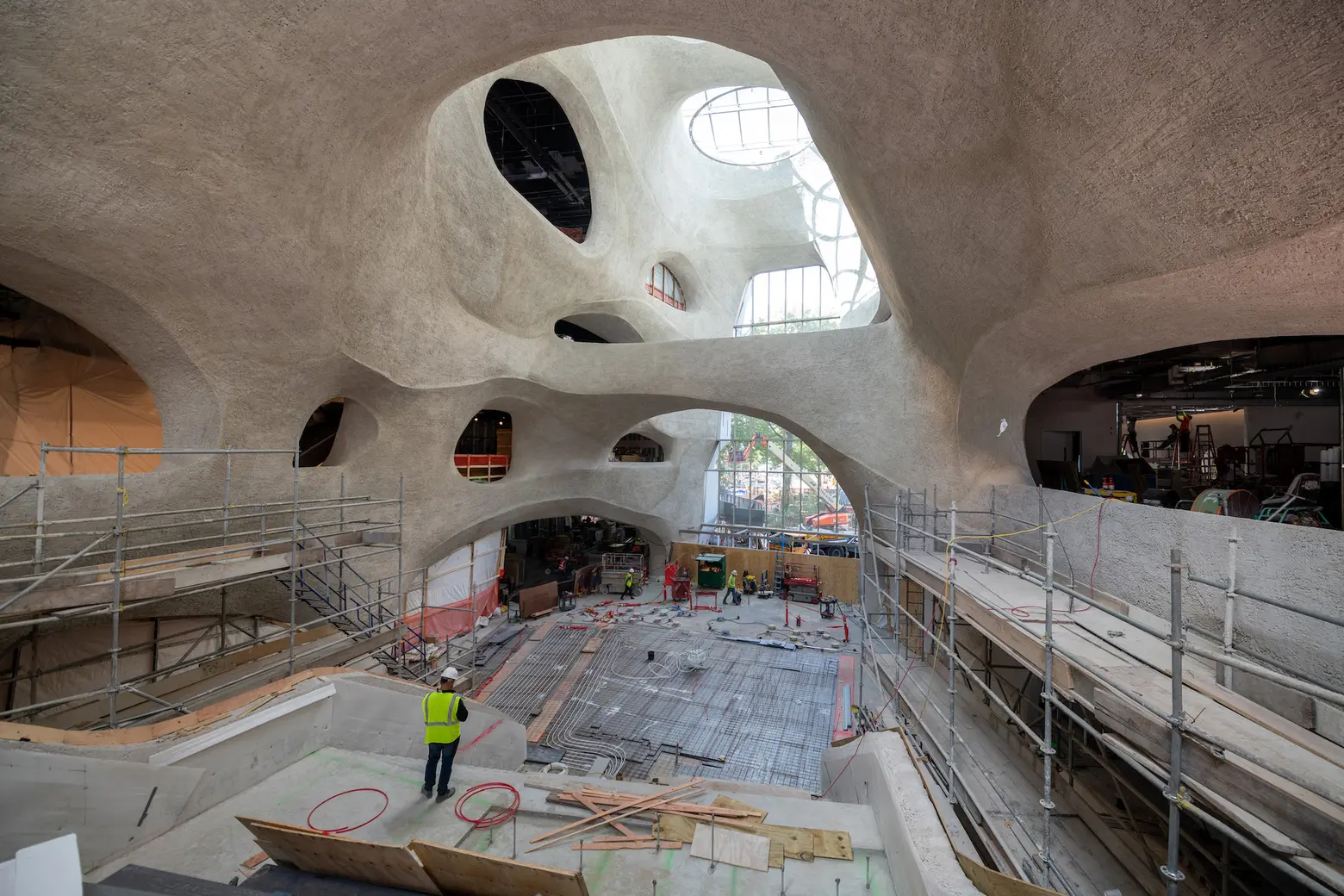
The Kenneth C. Griffin Exploration Atrium; Photo: Timothy Schenck/©AMNH
Not only does the American Museum of Natural History’s new center make the museum’s founding dream of building one continuous campus across four city blocks a reality, but it also brings a new architectural gem to New York City. Designed by Jeanne Gang’s Studio Gang, the Richard Gilder Center for Science, Education, and Innovation is a dramatic, curving structure, inspired by caves and canyons formed by natural forces. The museum released new photos and provided a media tour of the Gilder Center this week, highlighting its progress on the Upper West Side ahead of the official opening in February.
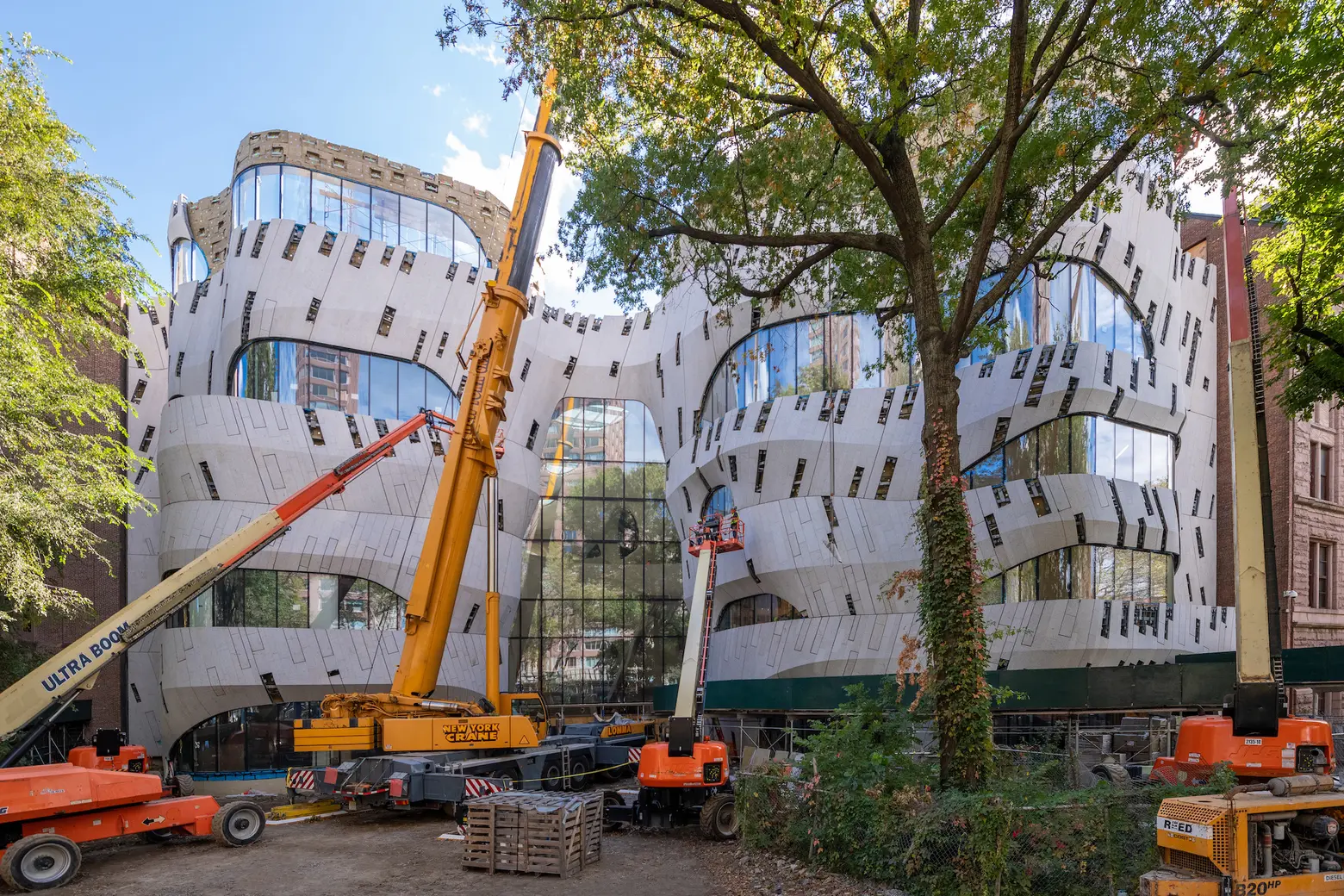
The Richard Gilder Center for Science, Education, and Innovation façade; Photo: Timothy Schenck/©AMNH
Nearly a decade in the works, the $431 million center measures 230,000 square feet and includes several components, all anchored by the four-story by Kenneth C. Griffin Exploration Atrium, a new entry point to the museum from Columbus Avenue as well as a connection to Central Park West.
Taking inspiration from geological canyons and glacial forms, Studio Gang designed the Gilder Center as an undulating, cavernous structure. Made of reinforced concrete, the flowing atrium was created using a construction technique known as “shotcrete,” invented by Carl Akeley, an AMNH naturalist and taxidermy artist. Structural concrete is sprayed directly without formwork and finished by hand to create a fluid look.
With one of the goals of the new Gilder Center to fix the museum’s “frustrating dead ends,” the space creates roughly 30 connections among 10 buildings.
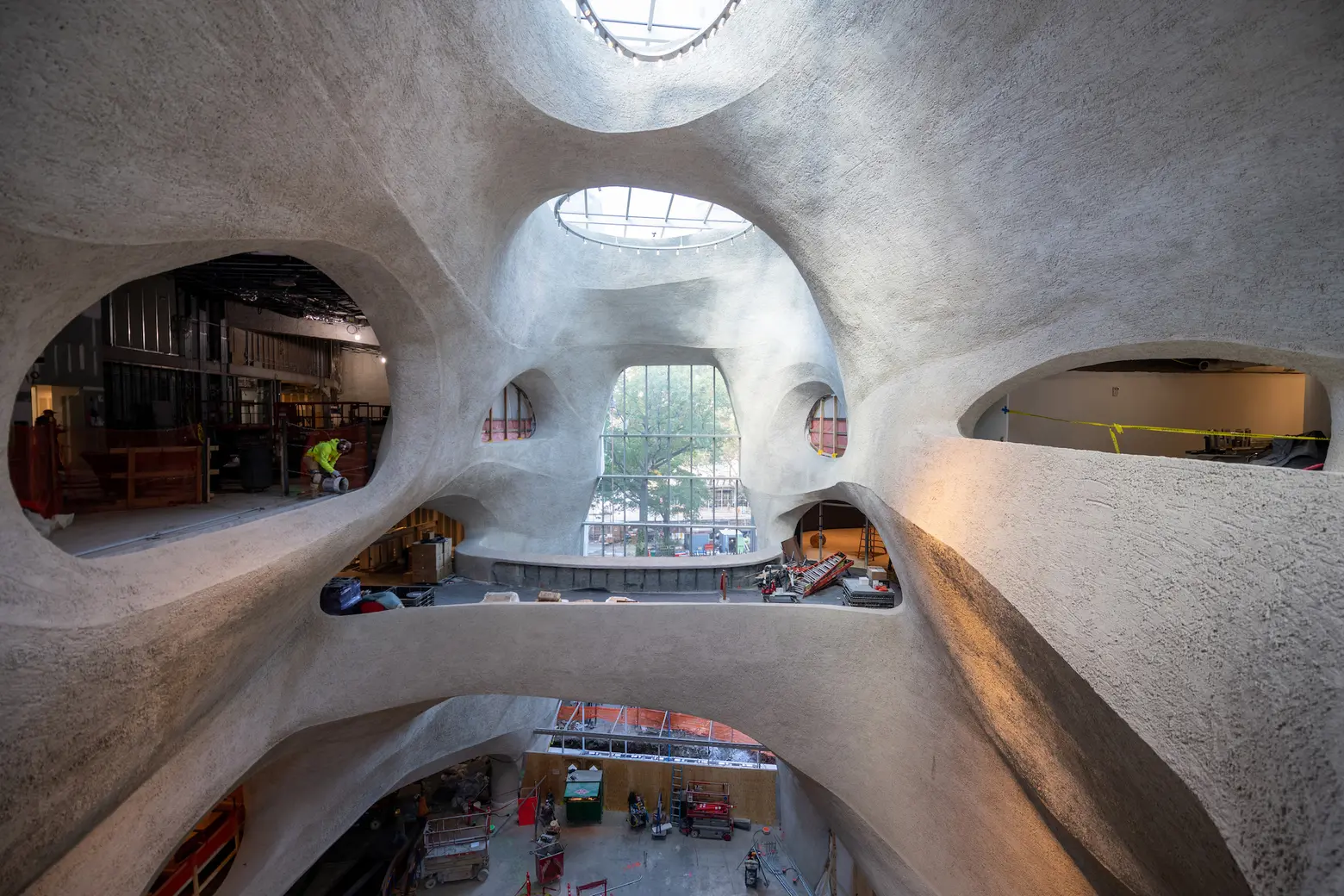 View from the fourth-floor bridge looking west toward Columbus Avenue and Theodore Roosevelt Park; Photo: Timothy Schenck/©AMNH
View from the fourth-floor bridge looking west toward Columbus Avenue and Theodore Roosevelt Park; Photo: Timothy Schenck/©AMNH
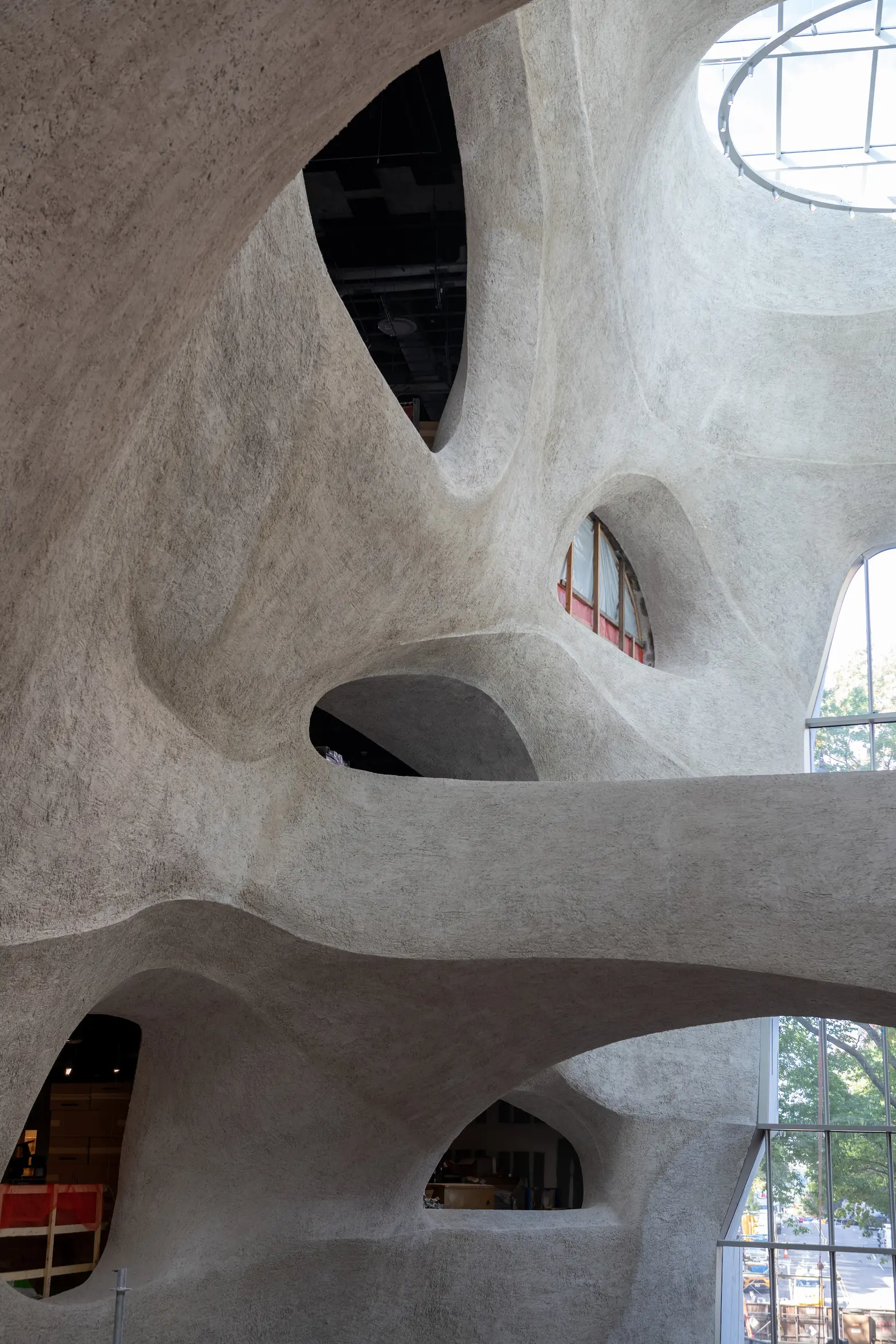 View west from inside the Griffin Atrium; Photo: Timothy Schenck/©AMNH
View west from inside the Griffin Atrium; Photo: Timothy Schenck/©AMNH
The Griffin Atrium is a soaring space with multiple openings and bridges, connecting museum-goers physically and visually to each other and to the exhibits across several levels. The lofty atrium is brightened with huge skylights and windows looking out onto Theodore Roosevelt Park.
The Louis V. Gerstner, Jr. Collections Core vertically displays museum collections, with three stories of floor-to-ceiling exhibits that represent diverse areas, from paleontology and geology to anthropology and archaeology, according to the museum. The Gilder Center is expected to house nearly 4 million scientific specimens.
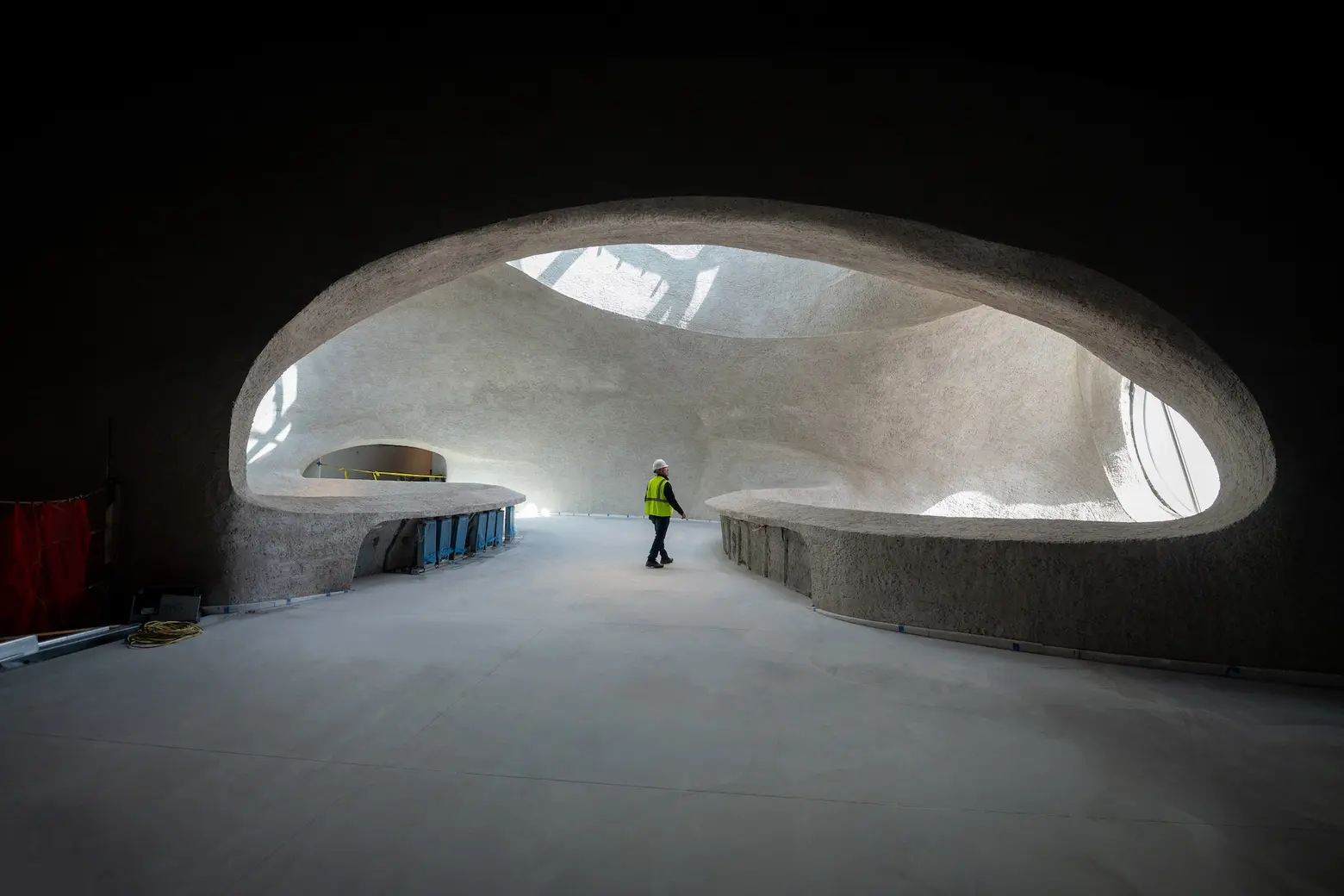 Construction view of a new classroom on the third floor Photo: Timothy Schenck/©AMNH
Construction view of a new classroom on the third floor Photo: Timothy Schenck/©AMNH
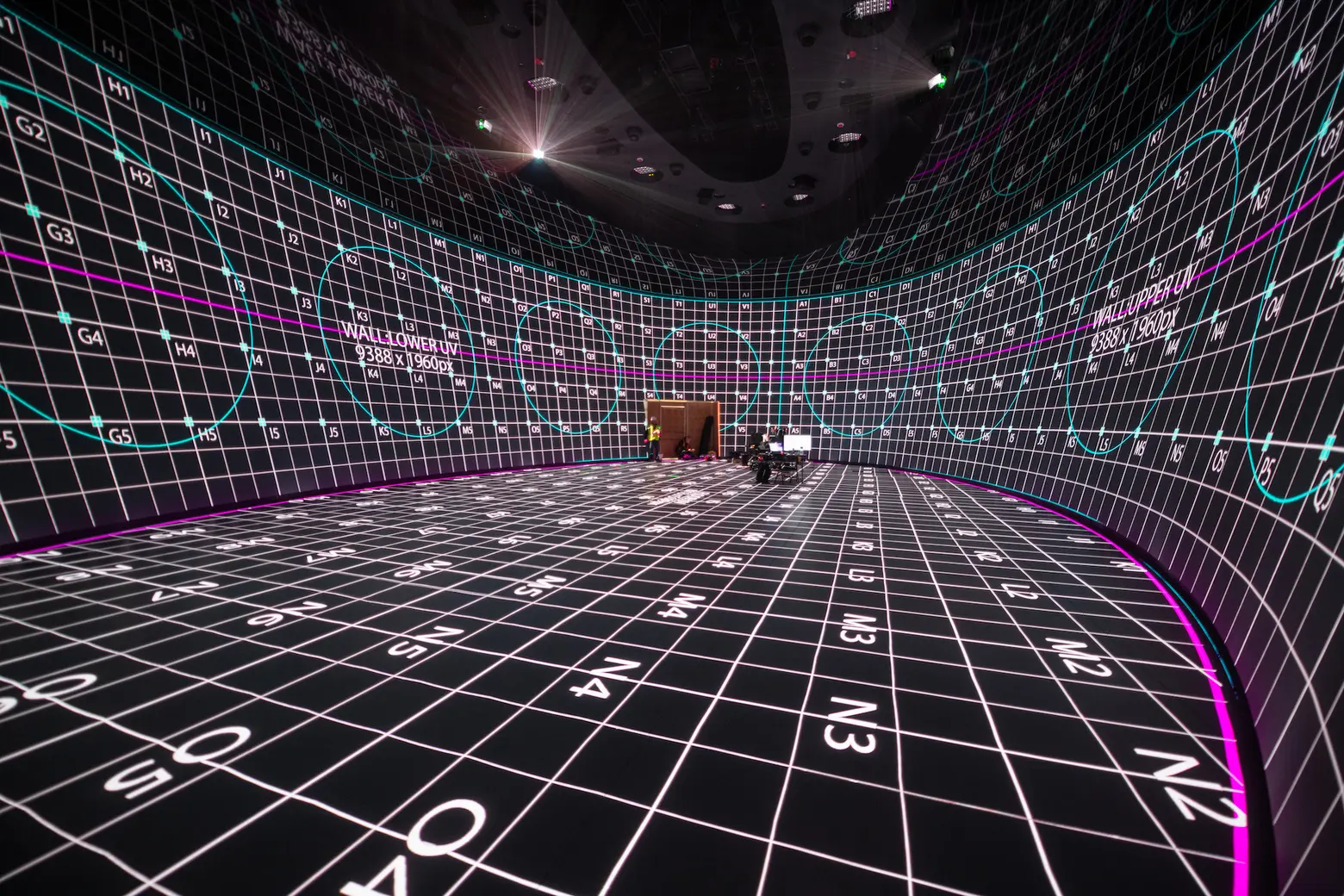 Test patterns projected by technicians working on Invisible Worlds, a 360-degree immersive science-and-art experience designed by Tamschick Media + Space with Boris Micka Associates, Photo: Timothy Schenck/©AMNH
Test patterns projected by technicians working on Invisible Worlds, a 360-degree immersive science-and-art experience designed by Tamschick Media + Space with Boris Micka Associates, Photo: Timothy Schenck/©AMNH
Other spaces at the Gilder Center include the Susan and Peter J. Soloman Family Insectarium, which will feature living, digital, and pinned insects. To encourage visitors to see and think about insects in a new way, the 5,000-square-foot gallery includes a massive 8,000-pound model of a bee hive, the world’s largest leafcutter ant display, and cases containing more than a dozen live insects.
The year-round Davis Family Butterfly Vivarium will feature 80 species of free-flying butterflies and the David S. and Ruth L. Gottesman Research Library and Learning Center will open the museum’s world-class print and digital resources to the public.
The Gilder Center will also be home to Invisible Worlds, a 360-degree immersive art experience that explores the interconnectivity of life on Earth through projections and sound. The 12-minute experience begins with the building blocks of DNA and moves on to the “ecological interdependencies in forests, oceans, and cities to communication made possible by trillions of connections within the human brain.”
The center will also include 18 newly built, renovated, or repurposed classrooms for students of all ages.
“In a time when the need for science literacy has never. been more urgent, we are thrilled and proud to be nearing the long-awaited opening date for the Richard Gilder Center for Science, Education, and Innovation, a major new facility that will transform both the work of our museum and the cultural landscape of New York City,” Ellen Futter, president of AMNH, said in a statement.
“In its exhibits and programs, and in the astonishing architecture that presents them to the world, the Gilder Center weds evidence-based thinking and transporting experiences that capture exploration and innovative scientific discovery.”
The Gilder Center will open to the public on February 17, 2023.
RELATED:
- Museum of Natural History’s new Studio Gang-designed science center to open next winter
- Seven years in the works, Jeanne Gang’s $383M Museum of Natural History expansion breaks ground
- Judge rules in favor of Studio Gang’s Natural History Museum expansion plans despite lawsuit attempt
All photos: Timothy Schenck/©AMNH
